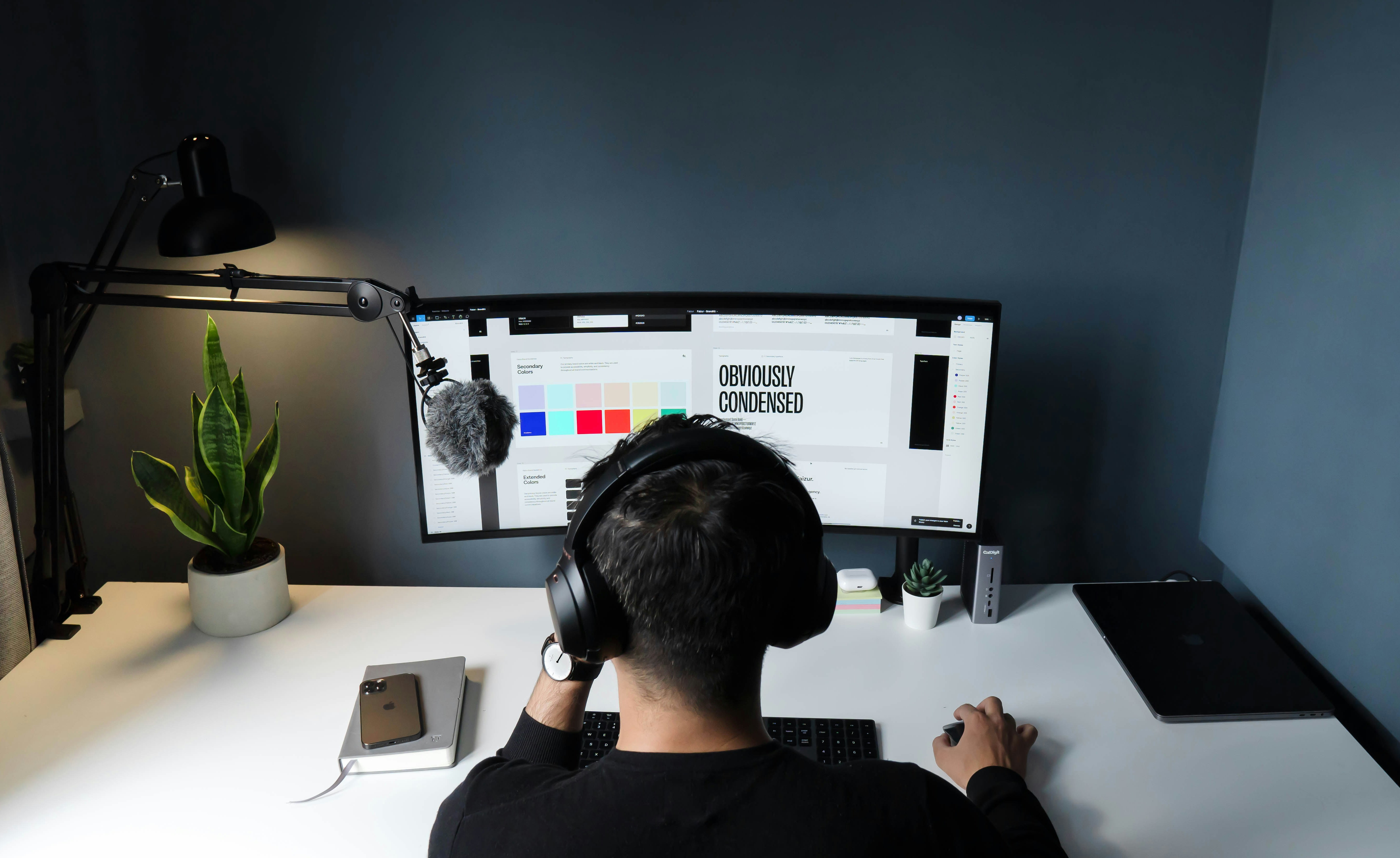Graphic design is more than just making things look beautiful. It is the art and skill of turning thoughts, emotions, and messages into powerful visuals that speak louder than words. Every color, shape, font, and image has the power to influence how people feel, think, and act. In a world full of information, graphic design helps ideas stand out, capture attention, and communicate messages clearly and effectively. From a brand’s identity to a social media post, from product packaging to website layouts, graphic design plays a central role in shaping the way we see and interact with the world around us.
One of the most powerful things about graphic design is its ability to turn complex ideas into simple, understandable visuals. Not everyone will read long paragraphs or detailed explanations, but almost everyone reacts instantly to a well-designed image. A single poster can raise awareness about a cause, a logo can make a business unforgettable, and a visual can communicate across languages without saying a word. That is why companies, creators, and organizations around the globe rely on graphic design to build their identities, tell their stories, and inspire action.
Graphic design is not just about creativity; it is also about problem-solving. Designers take information and ideas and find the most effective way to present them visually. This involves understanding the target audience, the message that needs to be shared, and the emotions that need to be evoked. A skilled designer doesn’t just create something beautiful; they create something meaningful. They balance aesthetics with function, making sure the design not only looks good but also communicates clearly and effectively.
One of the most common areas where graphic design works its magic is branding. A brand’s visual identity tells people who they are and what they stand for. The logo, color palette, typography, and overall style work together to create a memorable impression. A well-designed logo can make a brand instantly recognizable. Think about how certain brands are known worldwide not because of words, but because of their visual marks. This is the power of design—it builds trust, recognition, and emotional connection.
Graphic design also plays a huge role in marketing. In today’s digital world, attention spans are short. People scroll through social media feeds at lightning speed, and what makes them stop is a striking visual. Eye-catching designs grab attention, make people curious, and encourage them to learn more. Whether it’s a promotional post, a banner ad, or a product catalog, good design can turn a simple message into something that engages and inspires action.
Another area where design shines is storytelling. Humans are naturally drawn to stories, and visual storytelling makes those stories even more powerful. A series of images can show a journey, an infographic can explain data, and an illustration can bring an abstract concept to life. Instead of overwhelming the audience with too much information, good design simplifies and guides them through the message in a way that is both engaging and easy to understand.
The psychology of design is another fascinating part of this field. Every element in a design affects how people feel and respond. Colors can create moods—warm colors like red and orange can make people feel excited or passionate, while cool colors like blue and green can make them feel calm or relaxed. Fonts also carry personality—bold fonts feel strong and confident, while handwritten or script fonts feel personal and creative. Even spacing and layout influence how people perceive information. Designers understand this psychology and use it strategically to influence emotions and behavior.
Technology has expanded the possibilities of graphic design even further. Today, designers have access to advanced tools that allow them to create stunning visuals faster and more efficiently than ever before. But technology is just a tool; the real power comes from human creativity. A computer can help execute the design, but it is the designer who brings ideas, emotions, and vision to life. This combination of creativity and technology is what makes modern graphic design so exciting and limitless.
The role of graphic design is not limited to businesses and marketing. It is also a powerful tool in education, awareness campaigns, entertainment, and personal expression. Educational infographics help students understand difficult concepts more easily. Posters and campaigns spread messages about health, environment, and social issues. Album covers, movie posters, and book designs create emotional connections before a single word is spoken or a note is played. Design is everywhere—it shapes culture, inspires change, and makes communication more impactful.
One of the most exciting aspects of graphic design is its ability to adapt. Design trends change with time, and so do the ways people consume visuals. A few decades ago, design was mostly limited to print media like posters, magazines, and packaging. Today, digital platforms dominate. Websites, apps, social media platforms, and digital ads all rely on design to create experiences that feel modern, intuitive, and visually appealing. Designers have to stay updated with these changes, learning new tools and styles to remain relevant and effective.
Freelancing and remote work have also opened new doors for graphic designers. Now, talented designers can work with clients from around the world without leaving their homes. This global reach allows creative individuals to showcase their skills, build portfolios, and grow careers on their own terms. Platforms and communities make it easier to find opportunities, collaborate on projects, and get inspired by other artists. Graphic design has become more accessible than ever, encouraging more people to join the creative industry.
But design is not just about trends or technology—it’s about connection. When someone sees a beautifully designed poster or a meaningful logo, it sparks an emotional response. It could be curiosity, joy, trust, or excitement. That emotional reaction is what makes design powerful. People may forget words, but they rarely forget how something made them feel. Great design leaves a lasting impression that goes beyond the visual—it creates a bond between the creator and the audience.
Another key strength of graphic design is its ability to support brands in building trust. A professional, clean, and consistent visual identity makes a business look credible. When a company invests in quality design, it shows that they care about their image and their audience. People are more likely to trust and engage with brands that look polished and professional. Whether it’s a logo, business card, website, or social media presence, every design element builds perception.
Collaboration is also an important part of the design process. Graphic designers often work closely with marketers, writers, developers, and clients to bring ideas to life. Communication is key—understanding what the client wants, researching the audience, and then crafting visuals that align with those goals. This teamwork ensures that the final product is not only visually appealing but also strategically effective. A successful design project is always the result of a balance between creativity and clear communication.
As artificial intelligence and automation tools enter the design world, some people wonder if they will replace designers. But the truth is, AI can never fully replicate human creativity, emotion, and intuition. These tools may help speed up tasks, generate concepts, or assist in technical work, but they cannot replace the human touch. The future of design is a partnership between technology and creativity, where designers use tools to bring their visions to life more efficiently while still crafting meaningful and unique work.
Graphic design also encourages personal growth. Every project is a new challenge, a chance to learn and improve. Designers often push their limits, experiment with new ideas, and find innovative solutions. This constant evolution keeps the work exciting and rewarding. Whether someone is designing for a small business or a global brand, each piece of work contributes to their creative journey.
In today’s fast-moving world, where people are surrounded by visuals every day, good design has become more important than ever. Poor design can be ignored in seconds, but great design captures hearts and minds. It creates connections, builds trust, and makes ideas unforgettable. From the moment someone sees a product on a shelf to the time they interact with a brand online, graphic design shapes that experience in powerful ways.
The magic of graphic design lies in its ability to turn imagination into reality. It gives shape to thoughts, emotions, and ideas in ways that words alone cannot. It is both art and strategy, both creative and logical. It speaks directly to the human heart and mind, often without saying a single word. That is why graphic design is not just a skill or a profession—it is a powerful language that moves the world forward.
Whether it’s inspiring someone to take action, helping a brand grow, educating a community, or simply making something beautiful, graphic design plays a key role in making our world more connected, more expressive, and more meaningful. It transforms ordinary messages into extraordinary experiences and proves that creativity, when combined with purpose, has the power to change everything.



